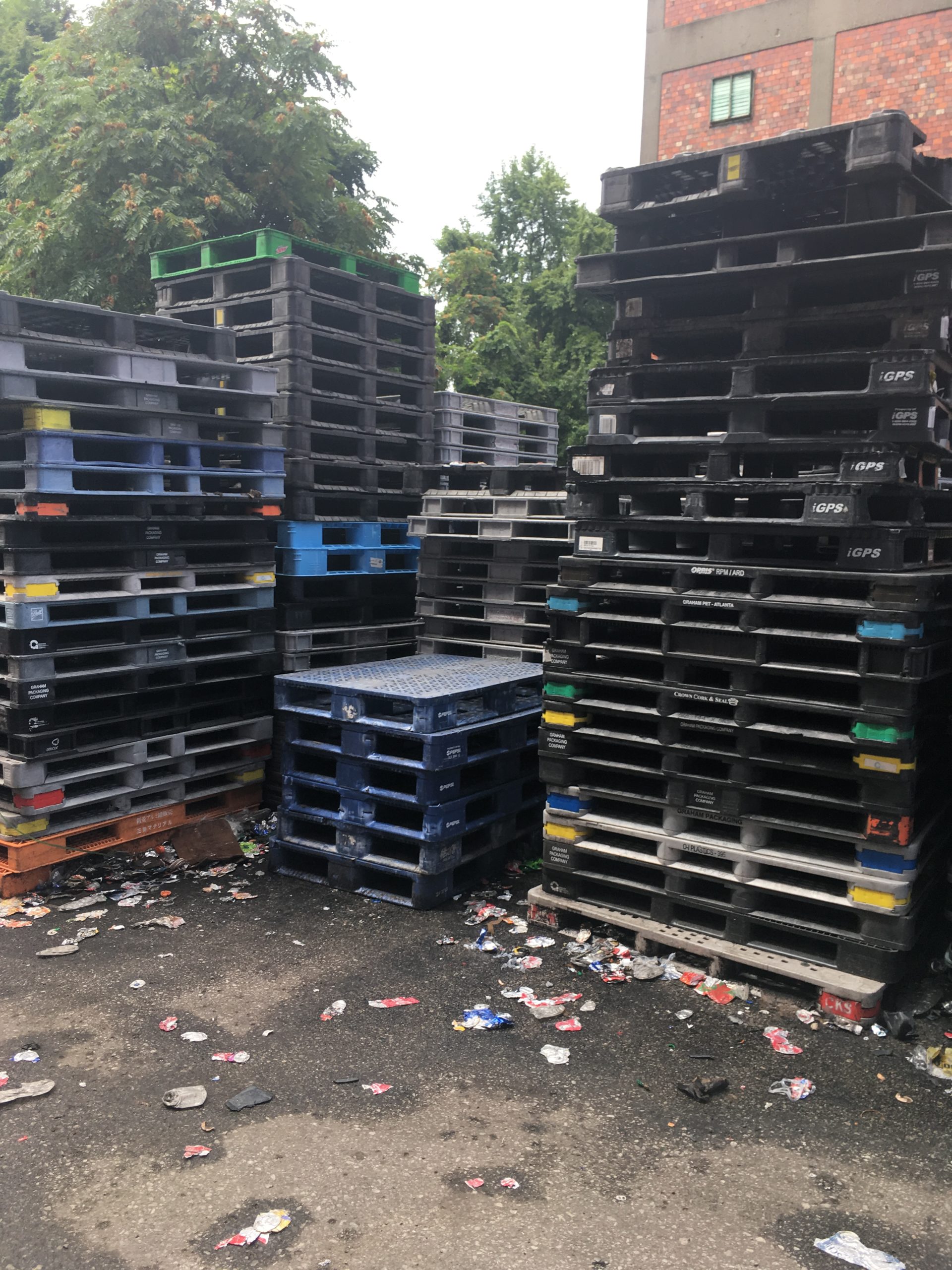Last month we discussed cardboard and paper-based packaging waste suitable for recycling.
In this month’s blog, I will discuss pallets, wood dunnage, and crates.
In Middle Tennessee, where Cumberland is headquartered, we have a high concentration of auto manufacturing and logistics. In this environment, we have an abundance of wood and plastic pallets and crates.
The standard size pallet is 48-inches by 40-inches – commonly known as “GMA” or “48X40”. These always have a ready, secondary market for plastic and wooden varieties with these dimensions, as long as they are whole and intact.
New wood pallets can easily sell for more than $15 – $20 each, so there is always a robust secondary market for rebuilt and recycled pallets. If your operation generates quantities of pallets, your pallet supplier is likely already buying the better pallets for resale. Most will also buy the damaged pallets, which can be repaired/recycled and re-sold for a few dollars less than their newer counterparts. If you don’t see at least $3.00 to $4.50 per pallet for your used pallets, you should schedule a call or visit from your representative and find out why.
Things become problematic with pallets that arrive from the Asia-Pacific region or Europe. These pallets are considered non-standard and often vary significantly from 48X40s. While some imports may have limited value, most create a problem for managers dealing with large numbers of non-GMA sizes. Recycling is limited to either de-construction, where parts are then used for rebuilding older pallets, or shredding to be turned into mulch.
Like their non-standard counterparts, wooden pallets that are broken beyond repair are also candidates for mulch. Look for a mulch processor in your area that uses pallets as a feedstock to create their product. While there is usually a processing fee, your plant can include pallets in your sustainability and recycling numbers. These recycling operations will separate metal fasteners from the wood and then shred, screen, and add a dye before the product is bagged or sold in bulk to nurseries, retailers, and landscapers.
Plastic pallets come primarily in high-density polyethylene or HDPE (number-1;) and number-7, known as “Other.” Where Number-1, HDPE, is an easily recycled resin, number-7 is a mixture of different plastics. Unfortunately, number-7s cannot be economically recycled using the technology available today. In quantity, recyclers will pay for HDPE pallets. Some will process your number 7’s too. But you’ll need to do some homework to ensure that the 7s are being managed correctly.
Another form of plastic packaging you’ll want to be sure to recycle are collapsible crates (also called ‘knockdowns’). These come in wooden and plastic forms, their wooden and plastic pallet counterparts, and can be recycled similarly. If you have any questions about recycling your packaging waste, please contact us and let us know your success stories again. We may highlight them (with your permission, of course) in a future blog. You may reach us at www.cumberlandrecycling.co or by phone at 615-239-5611.

